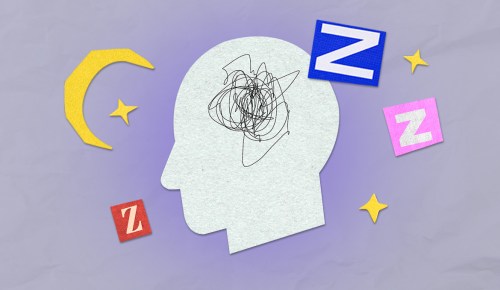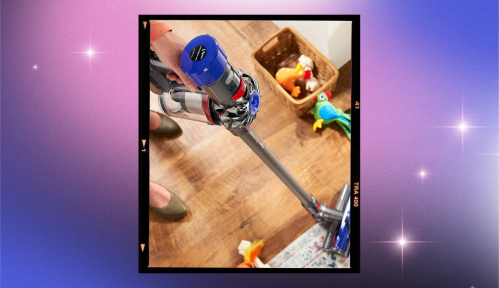Breathwork is one of my go-to healing modalities whenever I’m anxious, stressed, overwhelmed, or just feeling a bit off. It helps clear my mind and calm my nervous system—fast. As someone who has struggled with anxiety since I played with Barbies in elementary school, I wish I had a breathwork tool like the candle breathing technique back then that could help my young self deal with big emotions and feel safe and calm in any situation.
Experts in This Article
Breathwork teacher and life coach Gwen Dittmar says breathwork for children, in particular, is a simple and powerful coping mechanism to help them regulate their body, breath, and mind during emotional or stressful states. “Deep breathing helps to bring children to the present moment, while also helping them regulate their nervous system,” adds breathwork and mindset coach Ana Lilia.
It does this, she explains, by slowing down their heart rate, increasing the body’s oxygen levels, and activating their parasympathetic nervous system (aka the rest and digest state). And research backs this up: A 2021 study showed that taking slow, deep breaths significantly reduces children’s physiological arousal.
The candle breathing technique is one easy way to introduce kids to breathwork. As its name suggests, it involves visualizing blowing out birthday candles.
How to use the candle method to engage children in breathwork
This candle method works great for kids of all ages. Lilia suggests making mindfulness exercises like this one a game you play with them to teach them these tools before they need them. “I started teaching my nephew how to actively breathe when he was two years old. He loves it!” she says. “The sooner you teach children how to use their breath to calm themselves down, the easier and more automatic it will be for them to use these techniques.”
That said, Dittmar notes that breathwork is particularly helpful when kids are experiencing big emotions, upsets, tantrums, or trouble falling asleep. In these scenarios, Lilia recommends beginning the exercise by acknowledging those big feelings. “Get down to their level and connect with them,” she says. “Help them feel seen by acknowledging their emotions [by saying something like]: ‘You seem angry that your sister took your toy.’” Then invite the child to do some breathing with you and explain to them that this breathing practice can help them feel calm when they experience strong feelings.
There are a few different variations of the candle breathing technique to try. No matter the specific method, the purpose is to provide the child with a visual. “Tell your child to imagine they have a birthday cake and candle in front of them,” Dittmar says. “Then have them take a deep breath in through their nose and exhale out of their mouth to blow out the birthday candle.” Lilia adds that you can even ask them to close their eyes and make a wish as they do this. Then repeat as many times as needed until the child calms down. Lilia recommends at least five deep breaths. Afterward, she suggests embracing the child with a hug to help enforce a sense of safety.
If the child needs help grasping the concept of breathing in through the nose, Lilia recommends telling them to pretend they are smelling a flower. And if they need a more concrete visual, you can hold up five fingers and pretend they are candles and put one finger down as they blow each candle out.
Beyond the technique itself, Dittmar says one of the best ways to engage children in breathwork practices is for their caregivers also to do breathwork. “This shows our children that when we are dysregulated, tired, unmotivated, there are tools and solutions to feel better,” she says. So, when possible, do the exercise with them to lead by example.
More breathing techniques for children
The candle method is just one of many breathing techniques kids can use. Here are three more you can add to their toolkit.
Bunny breathing
“Bunny breathing is to imagine a bunny rabbit, sniffing in three times as if they are sniffing for carrots or lettuce, and then let out a big exhale through the mouth,” Dittmar says. “This type of breathwork is cleansing for children, similar to breath of fire for adults.”
Snake breathing
For bedtime, Dittmar recommends trying snake breathing with kids, which incorporates sound, activating the vagus nerve. “Tell your child to imagine a snake. Take a deep inhale through the nose, and on the exhale out of the mouth, make a hissing sound, slow and long,” Dittmar says. “A slower exhale helps our nervous system calm down.”
Butterfly hug
And lastly, incorporating tapping with deep breathing, a technique Lilia calls “butterfly hug,” can also help reduce anxiety, stress, and the feeling of overwhelm. “The butterfly hug is when you cross your arms over your chest and gently tap your shoulders, one at a time,” she explains. “While you’re tapping, you are gently breathing in through your nose and exhaling out of your nose.” She also recommends asking them how they are feeling as they practice this technique to help them process their emotions.
Sign Up for Our Daily Newsletter
Get all the latest in wellness, trends, food, fitness, beauty, and more delivered right to your inbox.
Got it, you've been added to our email list.











